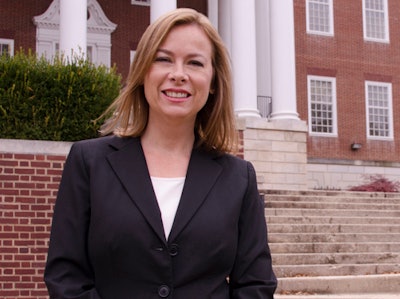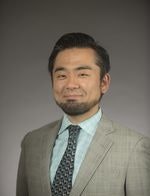 Dr. KerryAnn O'Meara, professor of higher education at the University of Maryland
Dr. KerryAnn O'Meara, professor of higher education at the University of Maryland
“We need to move out of the story in the news about what is yet another problem to the stories you see about real transformational kind of change,” said Dr. KerryAnn O’Meara, a professor of higher education at the University of Maryland, who presented parts of her forthcoming TIAA Institute paper on reforming faculty appointments and evaluation.
As the pandemic prompted much of higher education to rethink norms quickly, O’Meara shared how the faculty review and promotion process can be more equity-minded. Studies have shown that the traditional tenure track structure often excludes or disadvantages faculty from historically underrepresented groups.
“We have a lot of things we want to do in higher education,” said O’Meara, a past president of the Association for the Study of Higher Education. “We understand the ways in which higher education can reproduce structural inequalities in racism. We also have the expertise to be part of changing those structures. There are people teaching in schools, developing curricula, doing the work that could fundamentally shift the institution.”
O’Meara noted some universities are already building new pathways to tenure and promotion to address these problems. Worcester Polytechnic Institute this year created tenure and extended contract opportunities for teaching faculty, rewarding excellence in the classroom. Indiana University-Purdue University Indianapolis recently approved a tenure and promotion path centered on diversity, equity, and inclusion (DEI) work. Critics have long pointed out that DEI efforts are not weighted fairly in tenure or promotion processes. And faculty of color and women tend to do more of this DEI work.
“We’re looking at a process to rethink assumptions that we have,” said Dr. Adrianna Kezar, dean’s professor of leadership and Wilbur-Kieffer professor of higher education at the University of Southern California (USC), who also shared her related research on equity challenges in the academic workforce. “Our campuses remain embedded in a model that focuses on tenure track faculty.”
Yet non-tenure track faculty make up more than 70% of the academic labor. New faculty models that reflect this reality and better support contract positions are critical, Kezar stressed. Studies additionally show that poor working conditions of non-tenure track faculty can negatively impact student success in graduation and retention.
“If campuses have a mindset for tenure track faculty as they work on these efforts, then they don’t meet their objectives,” said Kezar, referring to her work with campuses trying to improve their policies and practices around non-tenure track roles. “What they end up doing is creating something like a parallel tenure-track system, which is still a problem. There is no reason that the systems need to be parallel or the same.”
Kezar's paper called on shared governance as a key way forward, that institutions should more equitably involve non-tenure track faculty in their policy making decisions to best support them and the campus overall.
In the symposium's next session, the American Council on Education (ACE), a higher education advocacy and research organization, presented insights from a survey series that routinely gathered responses from more than 200 university presidents during the pandemic. The TIAA Institute partnered with ACE on three of the surveys. Morgan Taylor, ACE’s associate director of research, emphasized that the data reflect views only from one moment in time.
One finding in surveys from April and February 2021 was that the overwhelming majority of presidents ranked student mental health as the most pressing issue their campus faced at that time.
“That was the fifth time in the survey series that this was the most commonly selected item,” said Taylor.
The mental health of faculty and staff ranked as the third most common issue in the April 2021 survey. A September 2021 survey continued to show most presidents were concerned with the mental health of students as well as faculty and staff. Regarding the latter, ACE researchers noted there have been more news reports recently of the pandemic exacerbating burnout in the higher education workforce.
 Dr. Hironao Okahana, assistant vice president of research at the American Council on Education
Dr. Hironao Okahana, assistant vice president of research at the American Council on Education
As for racial equity, however, Okahana said he was surprised to see a drop in how many presidents ranked racial equity as a priority in their surveys. In April 2021, about 40% of presidents said it was a top issue, but that fell to 29% in the September 2021 survey.
“We need to make sure [racial equity] is not always number five in the top five list of priorities,” he said.
The TIAA Institute symposium additionally tackled higher education's digital infrastructure needs and opportunities since the pandemic pushed the world’s into relying even more on technology.
“This will change how people think about their access and experiences in higher education, everything from admissions to their campus experience,” said Dr. Michael Thomas, president and CEO of the New England Board of Higher Education (NEBHE), an organization that works with colleges and universities in the New England states. “But we know that higher education can lag behind other industries in its digital maturity. So, that raises the question: to what extent did higher ed pivot in this pandemic transition rather than transform?”
NEBHE shared insights from their recent national survey asking more than 150 university presidents across the country about what they thought of digital infrastructure in higher education today.
“The vast majority of respondents believe that hybrid is the future, not just for instruction but wraparound student support,” said Donald Sarra, policy analyst at NEBHE. “Presidents also said that improving student experience and improving student retention are the two most important drivers of digital infrastructure.”
But Sarra and Thomas pointed out that presidents ranked lowering tuition costs as the least relevant objective to digital infrastructure. To Sarra, that highlighted a disconnect given the quality of a student’s experience can be closely tied to the tuition cost.
With the pandemic boom in education technology and digitally native students’ expectations for colleges to be technologically nimble, Thomas noted as well that higher education needs to be “vision-driven and not vendor-driven.”
“We could get the wrong message from the signal if we don’t collaborate with students and understand their needs,” said Thomas. “Lead with the vision and understanding of who you are serving here. And find the right balance of people and technology to meet the needs of increasingly diverse students.”
Across the symposium's sessions, researchers and practitioners agreed that the pandemic has drastically changed higher education. What lies ahead remains uncertain.
“It’s very important that we continue researching these areas,” said David Richardson, head of the TIAA Institute. “And that we continue uncovering innovative solutions to improve outcomes for faculty and staff—but, more than anyone, for the next generation of students coming through.”
Rebecca Kelliher can be reached at [email protected].
















